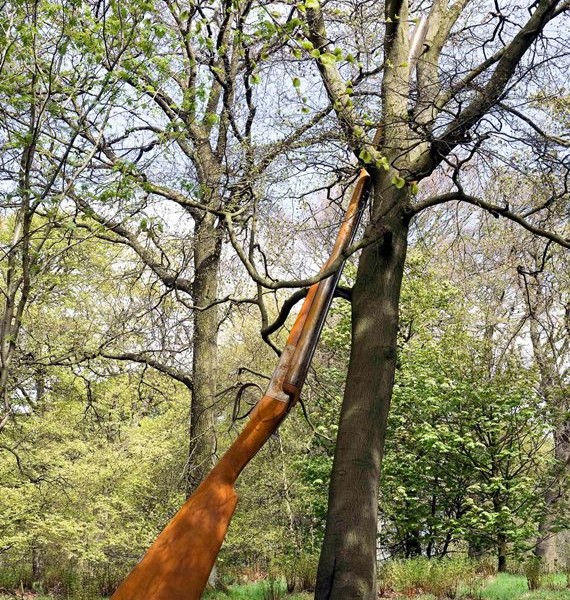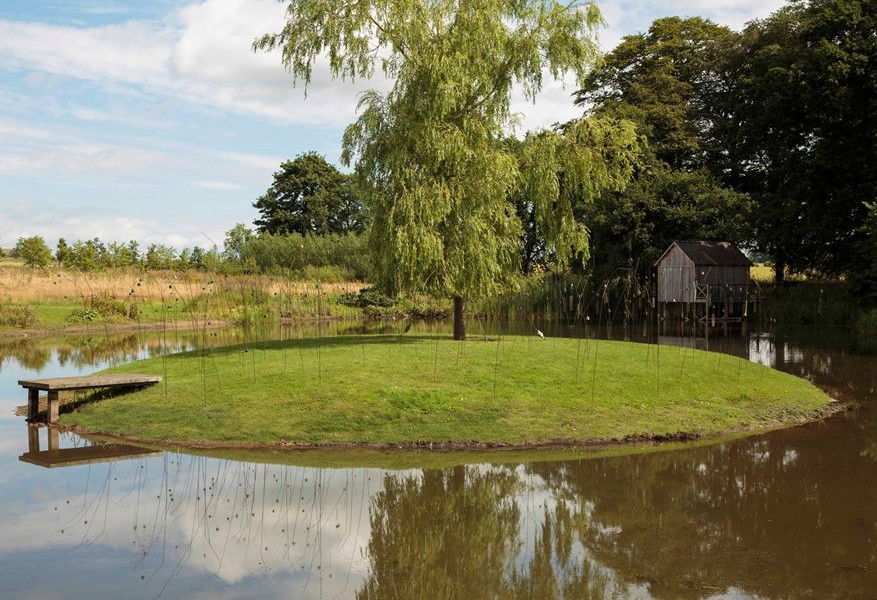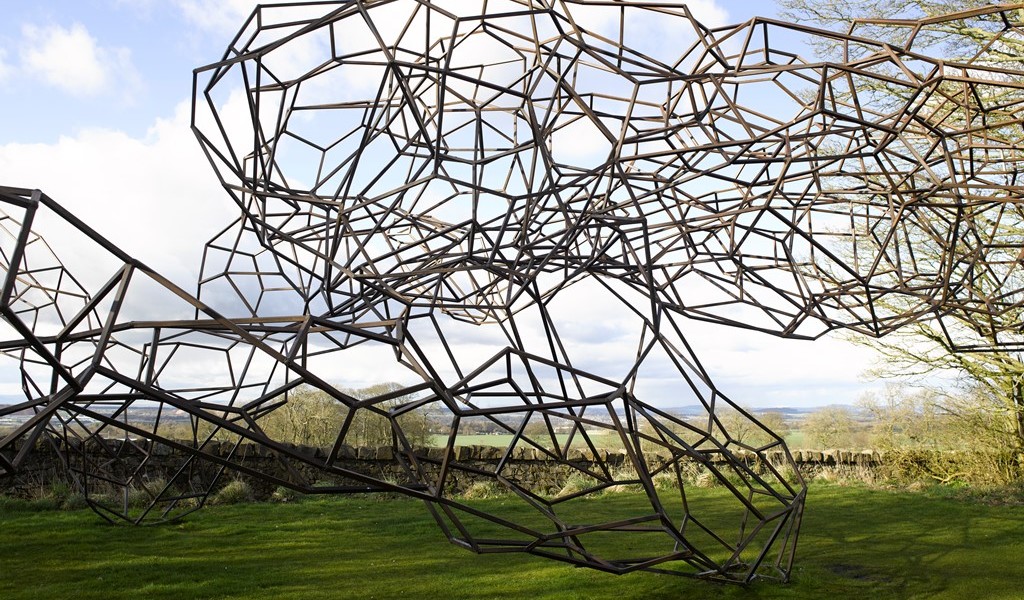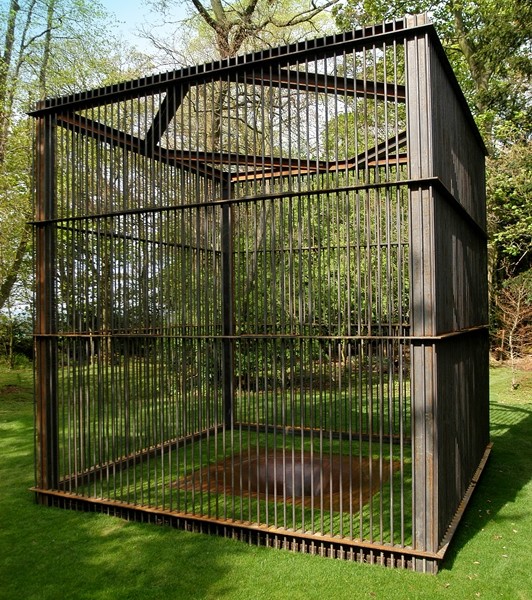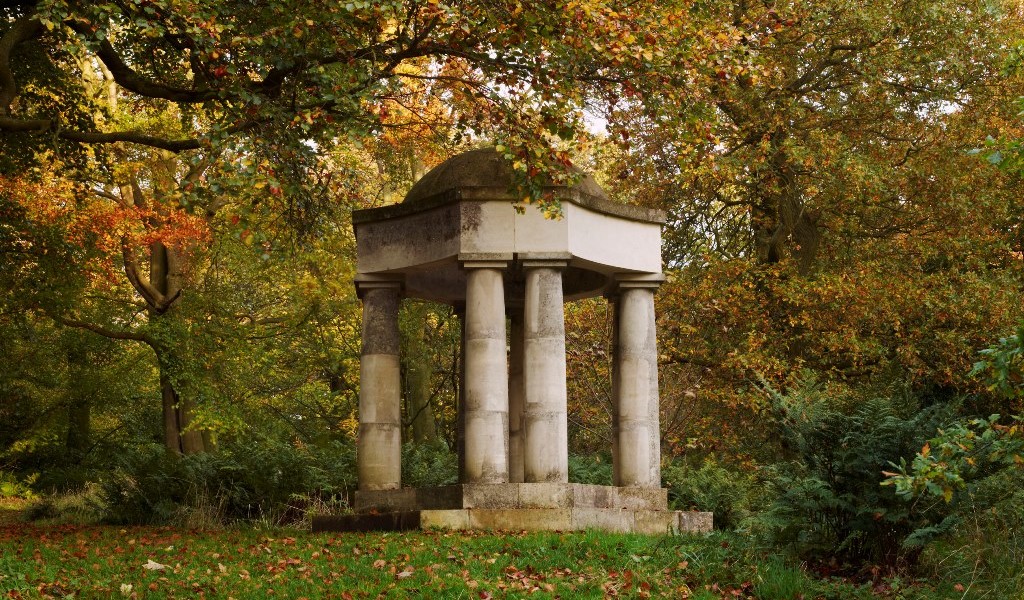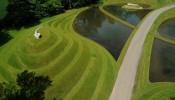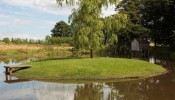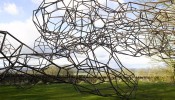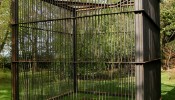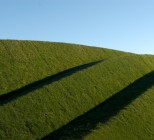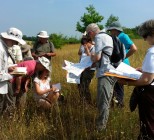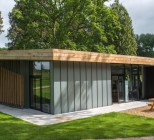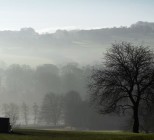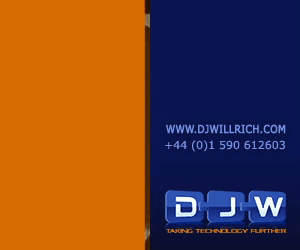When Robert and Nicky Wilson bought Bonnington House, a Jacobean manor house in 1999 they soon realised that the formal gardens, fields and woodlands surrounding the historic house would be perfect for their long-held ambition to create a sculpture park.
Since 2005, the grounds of the 120-acre estate have gradually become populated by works of art from some of the biggest names in contemporary sculpture including Antony Gormley, Anish Kapoor and the late Ian Hamilton Finlay, and opened to the public as a sculpture park in 2008.
Nicky had always been deeply influenced by Ian Hamilton Finlay’s greatest piece of work Little Sparta, situated 30 miles from Bonnington that combined horticulture with individual works of art. Nicky believed that in the ancient land of art and nature, home and family, livestock and the footfall of those interested in contemporary sculpture could all co-exist.
The couple’s aims with Jupiter Artland were to promote the benefits of outdoor creative activity for well-being, promote contemporary art through permanent commissions and exhibitions and to nurture emerging artists. As well as this and perhaps the grandest aim was to provide free unique access, learning and engagement to world class sculpture for educational organisations and community groups as well as extending reach through free digital engagement, training and resources.
It is Jupiter Artland’s mission to get every school child in Scotland to visit and experience the sculpture park for free and offers free visits to schools, universities and community groups. The team also work with schools to build a lifelong appreciation of art.
“Efforts to get the attention of young people have always been the main objectives of our fund; we’ve stimulated their curiosity to come here for themselves and find out how art has the power to change a person’s sense of perception,” says Robert Wilson. “In the first five years since Jupiter Artland opened, 14,500 schoolchildren visited – free of charge.”
The entire 120 acre estate is dotted with site specific sculpture and each year the team commission a temporary sculptural piece by an emerging artist. Visitors to Jupiter Artland are given a map indicating the location of the artworks within the grounds. Many of the works have taken years to blend with the landscape and in year three of the sculpture park the land was allowed to rest. For a whole year there was no earth moving to scar the land and this allowed the 2010 works to sit naturally in the woods.
One of the defining artworks at the park is Cells Of Life (2011) by Charles Jencks, which according to John Heffernan, head of exhibitions and audience development at Jupiter Artland, has only just been completed. The work sees eight landforms and a connecting causeway surround four lakes and a flat parterre for sculpture exhibits. The theme is the life of the cell and from above, the layout presents a cell’s early division into membranes and nuclei, and becomes a landform celebration of the cell as the basis of life. “We have finally finished the Cells of Life landform and to celebrate we have asked Charles Jencks to show his studio works,” says Heffernan. The studio works will inform his landscape practice and illuminate his humour and playfulness but also his serious investigations into rocks, cosmos and science.
“It’s over time that we are learning the benefits of getting to know the work well,” he says. “The challenging work of Nathan Coley has also settled into the landscape – no less confronting but more at home.”
Commissioning and developing these exceptional artworks is a major part of the team’s work but they are also keen explore how they can be interpreted in a contemporary way. This has led them down the digital route and to engage hard to reach young adults they have developed a free Jupiter Artland app.
We have a dedicated and experienced grounds team who care for the landscape and they help to maintain a landscape that offers a unique opportunity to experience contemporary art in a beautiful, natural landscape. Visitors can touch, climb and walk around all of the pieces on display.
“The name of the park itself is made up of two words – “art” and “land”,” says Wilson. “And that is very significant; in the sense that art enriches the land, and the land enriches the art. The landscape is a constantly changing phenomenon. And so, too, is the art – depending on whether you’re looking at it on a beautiful, sunny day, or in the snow, or through the blinding rain. It’s a never-ending process of change.”
Jupiter Artland was a finalist in this year’s Art Fund Museum of the Year prize and over the the coming years the team aims to develop more challenging and complex pieces that offer new ideas and inspiration’s to the landscape and continue to provide create activity and well-being for its visitors.
Jupiter Artland will close on September 25 and Reopen in May 2017.



